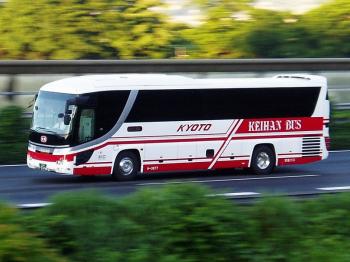Getting Around Kyoto
Getting Around Kyoto
All City Transport Options: What Locals Use and What’s Best for Tourists
General Overview
Getting around Kyoto is a bit of an adventure. One thing that surprised me about the transport system here is how it seamlessly blends traditional methods with the modern convenience of public transportation. You’ll find everything from buses and subways to the iconic rickshaws weaving through the streets.The public transport system is quite efficient overall; the buses and trains are generally on time, and they can take you pretty much anywhere you need to go. The main types are the Kyoto City buses, which are essential for accessing sights like Kinkaku-ji and Arashiyama, and the Kyoto subway. The subway runs primarily during the day, around 5:30 AM to 11 PM, but check specific schedules as they can vary.
In terms of prices, a single ticket on the subway is about ¥210, and a bus ride costs around ¥230. So for a day out, you could end up spending around ¥1,000 if you hop on a few buses and trains. Oh, before I forget – many visitors think the city passes will save them a lot of money. While they have their perks, if you're just visiting a couple of places, individual tickets often work out cheaper.
One common frustration I had was during rush hour when the subway can get packed. Picture me, all squished and overwhelmed, trying to hold onto my bag while being jostled about. Not a fun experience! But on the flip side, I was pleasantly surprised by how friendly everyone is. It’s not unusual for locals to offer assistance if you’re looking lost.
A local hack is to download the Kyoto City bus app—it really helps coordinate your routes and save time. Plus, if the weather turns sour, like during late spring or early fall, be aware that the buses can get crowded as tourists seek shelter.
On a side note, taxi fares in Kyoto can climb fast—up to about ¥1,000 just for the first two kilometers, so they’re best avoided unless absolutely necessary. And it’s quite expensive during peak times due to the surge pricing. Seasonal differences can also affect train fares, especially during cherry blossom season when trains can be exceptionally full.
So, if you find yourself looking for getting around Kyoto, the bus route 100 is a great choice for first-time visitors as it connects many key spots. And remember to keep your belongings close, especially during those busy rush hours—it’s the kind of city where everyone is moving just as much as you are!
Types of Transport

popular with tourists
The bus system in Kyoto is extensive and covers most major tourist attractions, including Kinkaku-ji, Arashiyama, and Gion, making it a convenient option for exploring the city. A single bus ride typically costs 230 yen, and you can pay using cash or an IC card like Suica or Pasmo, which allows for seamless travel. For tourists, consider purchasing a one-day bus pass for 600 yen, which offers unlimited rides and can save you money if you plan to visit multiple sites in a day. Remember that buses can get crowded, especially during peak tourist seasons, so try to travel early in the morning or later in the evening to avoid the rush. Lastly, always be respectful and quiet on public transportation; it’s a cultural norm in Japan, and maintaining a low noise level helps everyone enjoy their journey.

The metro in Kyoto primarily consists of two lines: the Karasuma Line and the Tozai Line, providing convenient access to key areas such as downtown Kyoto, the Kyoto Station, Nijo Castle, and the Sanjo area. A single ticket costs around 210 to 350 yen depending on the distance, and you can purchase tickets at vending machines or use a prepaid IC card like ICOCA for seamless travel. To save time, consider getting a one-day pass for 900 yen, which allows unlimited travel on both metro lines, especially beneficial if you plan to visit multiple attractions in one day. Additionally, always keep an eye on the signs and maps in both Japanese and English at the stations for easy navigation, and remember that trains can get crowded during rush hours (7-9 AM and 5-7 PM), so plan accordingly.
Here you can learn about all types of transport in Kyoto. What transport is available, how to reach tourist attractions and which mode of transport is optimal.
